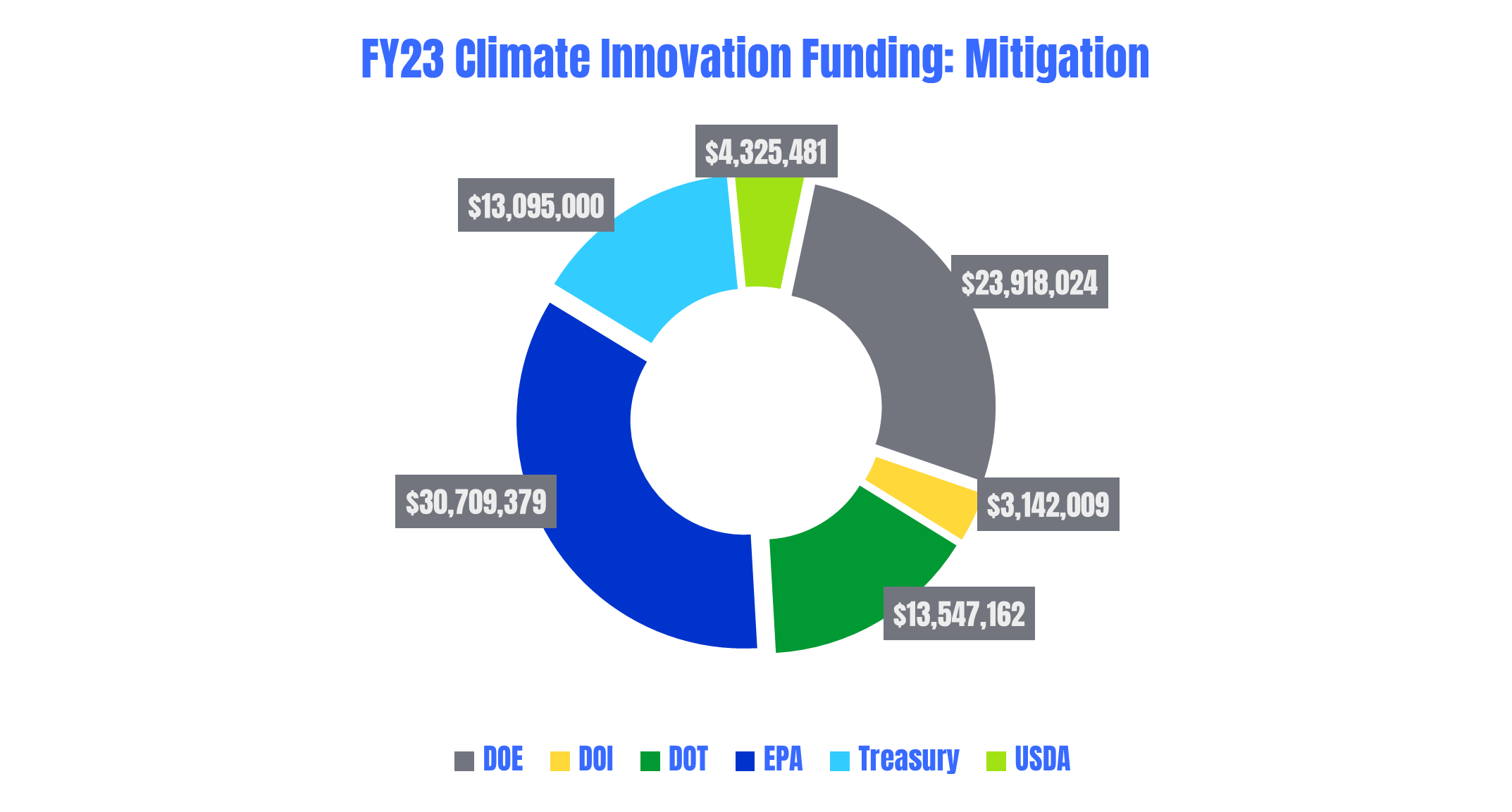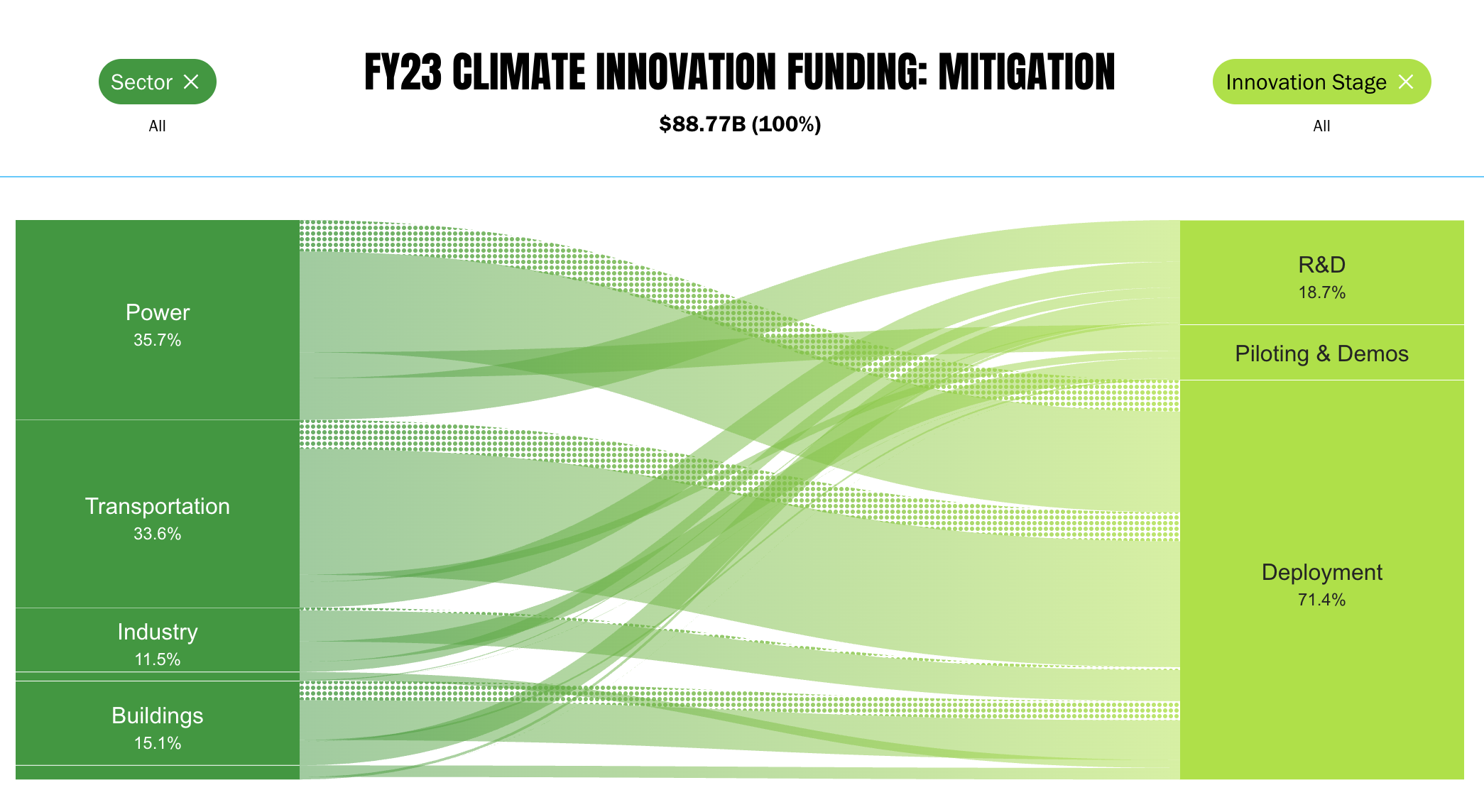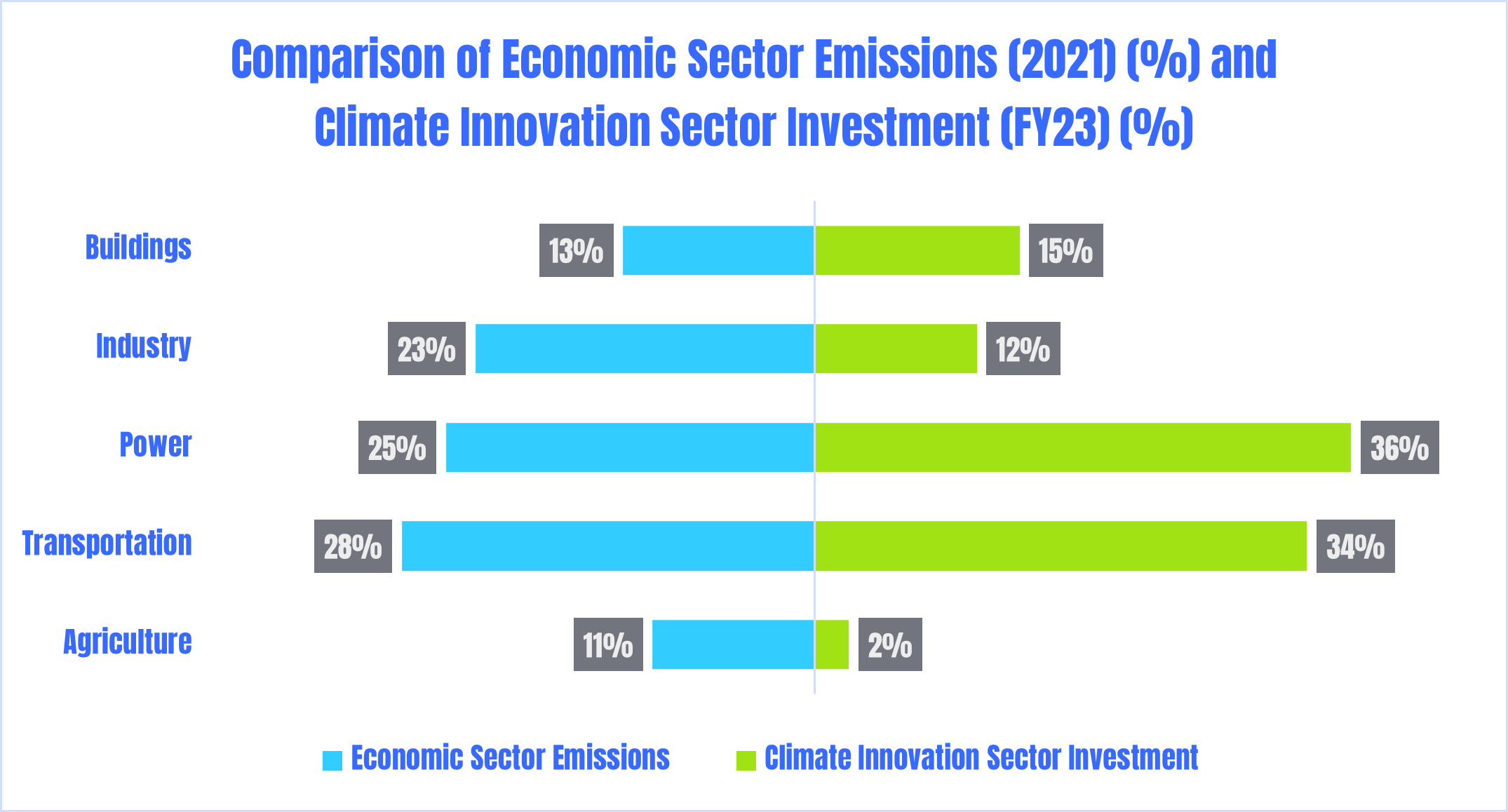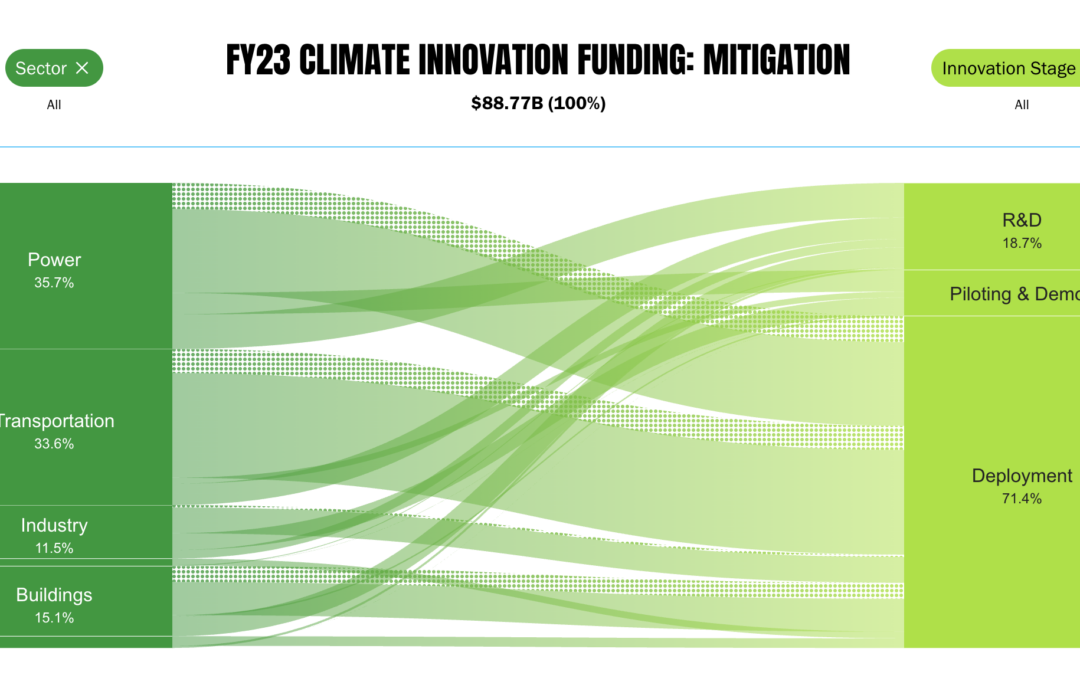Federal investment in climate innovation has surged since 2021, driven by cash infusions from the Bipartisan Infrastructure Law (BIL) and Inflation Reduction Act (IRA). In just two fiscal years, the Department of Energy’s funding for climate programs rose by more than 300%. And the Department of Transportation’s budget grew 270%.
The vast majority — a whopping 86% — of all that money came from the IRA and BIL, revealing a new “whole of government” approach to the climate crisis and a heightened level of focus on tackling its immediate risks.
These data points come from Environmental Defense Fund’s newly updated “Climate Innovation Funding Tracker,” for which David Gardiner and Associates conducted the underlying research. The interactive tool helps users comprehend the scope of federal funding available to mitigate climate change, and visualize exactly where it’s all going. (In future editions, the Tracker will also include funding for climate adaptation.)
Per the Tracker, “climate innovation” refers to the creation and application of new or enhanced climate solutions. The EDF tool captures everything from grants and loans to estimated tax credit expenditures.
Where’s the money coming from?
To execute a government-wide response to climate change, we’ve seen some agencies take on new or bigger roles to administer important IRA and infrastructure law programs. The Environmental Protection Agency, for example, overtook DOE last year in climate mitigation appropriations, thanks largely to the IRA’s massive Greenhouse Gas Reduction Fund. Over the past couple years, the Treasury Department has also become a major player in climate funding, thanks to the deployment of the IRA’s clean energy tax credits. Dollar amounts gathered from the Congressional Budget Office for estimated tax credit expenditures accounted for over a quarter of the total climate mitigation funding from the IRA in FY23.

(Credit: Environmental Defense Fund)
Where’s the money going?
The EDF Tracker also helps users understand where all this money is flowing. The IRA and BIL focus heavily on reducing emissions in the power and transportation sectors. In FY23, nearly three-quarters of all climate mitigation appropriations went to the transportation and power sectors, while the rest went towards industry, agriculture, buildings, and forestry.
After years of government inaction on climate, both bills also put heavy emphasis on technologies that can be deployed immediately, such as electrification solutions, clean electricity, low-carbon fuels, and energy efficiency programs.
In fiscal year 2021, about half of climate innovation funding went toward deployment, as opposed to R&D or demonstration and pilot programs. But in FY23, 71% of funding went to deployment.

(Credit: Environmental Defense Fund)
Still, both IRA and BIL have funneled significant sums towards research and pilots for technologies that are in earlier stages of commercialization. This includes carbon management, which saw a 350% growth in federal funding support between FY21 and FY23.
Where do we go from here?
A deep dive into these data also exposes when federal funding is, or is not, matching up to need. Some sectors of the U.S. economy are underfunded compared to their overall impact on greenhouse gas emissions. For example, only 11.5% of FY23 climate mitigation funding went toward industry; and while that’s higher than past years, U.S. industry accounts for a much more substantial 30% of greenhouse gas (GHG) emissions.
EDF argues that closing gaps in industrial sector investment should be a priority for the administration going forward. Though the total amounts remain small, agencies did double investment in pilot programs and demos related to industrial decarbonization between FY21 and FY23. Efforts like the DOE hydrogen hubs and direct air capture pilot program are important for tackling emissions from this hard-to-decarbonize sector.

(Credit: Environmental Defense Fund)
Want more insights from the data? Check out EDF’s latest blog post.
